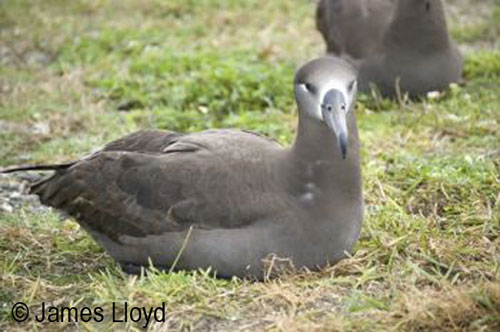Sievert Rohwer of the Burke Museum and Department of Biology, University of Washington, Seattle, USA and colleagues writing in the avian journal The Condor have looked at how flight feather moult in Black-footed Albatrosses Phoebastria nigripes affects breeding.
The paper's abstract follows:
"Many large birds cannot replace all their flight feathers annually, creating potential life-history tradeoffs between breeding and molting. We show for the Black-footed Albatross (Phoebastria nigripes) that adults with overly worn primary flight feathers suffer reduced fledging success in the current breeding season and are likely to skip the next breeding season, even though they are still alive. If worn flight feathers affect breeding detrimentally, it follows that worn flight feathers accumulate because time for molt is limited. We show that individuals that spend more time breeding replace fewer flight feathers in the following molt. Thus in the Black-footed Albatross incomplete molts link more time invested in breeding to reduced feather quality, and feather quality predicts breeding success in the current season and breeding effort in the following year. Detrimental effects of flightfeather wear on breeding should be expected in other birds that cannot replace all their flight feathers annually. As in other albatrosses, the primaries of the Black-footed Albatross are replaced in an intrinsic molt cycle that in most but not all individuals results in most flight feathers being replaced at least every second year."
Reference:
Rohwer, S., Viggiano, A. & Marzluff, J.M. 2011. Reciprocal tradeoffs between molt and breeding in albatrosses. Condor 113: 61-70.

John Cooper, ACAP Information Officer, 6 July 2011

 English
English  Français
Français  Español
Español